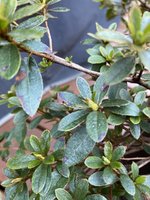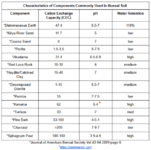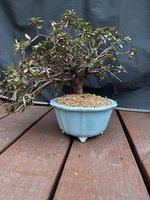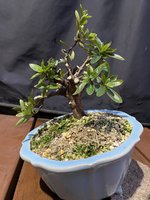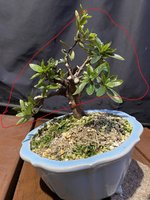Leo in N E Illinois
The Professor
- Messages
- 11,339
- Reaction score
- 23,284
- USDA Zone
- 5b
Yes, I winter my Satsuki and Kurume type azaleas in a well house, with ZERO light. A fan, pointed at a wall to disperse the breeze, the fan runs 24 hr / 7 days a week. Cheap 7 or 9 inch diameter fan from a box store. Buy extras in July, so if one craps out in January, you have a replacement on hand. They are cheap fans, they do crap out in the high humidity of the well house.
Key about winter with no light. The temperature MUST be kept below 40 F. This is key. As soon as temps increase above 40F (+4 C ) the metabolism of the azalea increases, a metabolic consumption of sugars increases, and eventually (weeks or months, not just a single day) the azalea health will decline because it burned up too much of its stored energy (sugars) over winter. When kept below 40 F, below +4 C, the metabolism is slow enough that the exhaustion of sugars is not a problem. In addition, you do not want the tree to try growing while in the dark, as this will result in leggy, pale, etiolated foliage, that would have to be pruned off after it is out of storage.
I have been wintering my Satsuki in the dark well house for over 20 years. It works. Cold storage in the dark is okay, as long as it stays COLD enough, and of course, that it doesn't get too cold.
Key about winter with no light. The temperature MUST be kept below 40 F. This is key. As soon as temps increase above 40F (+4 C ) the metabolism of the azalea increases, a metabolic consumption of sugars increases, and eventually (weeks or months, not just a single day) the azalea health will decline because it burned up too much of its stored energy (sugars) over winter. When kept below 40 F, below +4 C, the metabolism is slow enough that the exhaustion of sugars is not a problem. In addition, you do not want the tree to try growing while in the dark, as this will result in leggy, pale, etiolated foliage, that would have to be pruned off after it is out of storage.
I have been wintering my Satsuki in the dark well house for over 20 years. It works. Cold storage in the dark is okay, as long as it stays COLD enough, and of course, that it doesn't get too cold.

